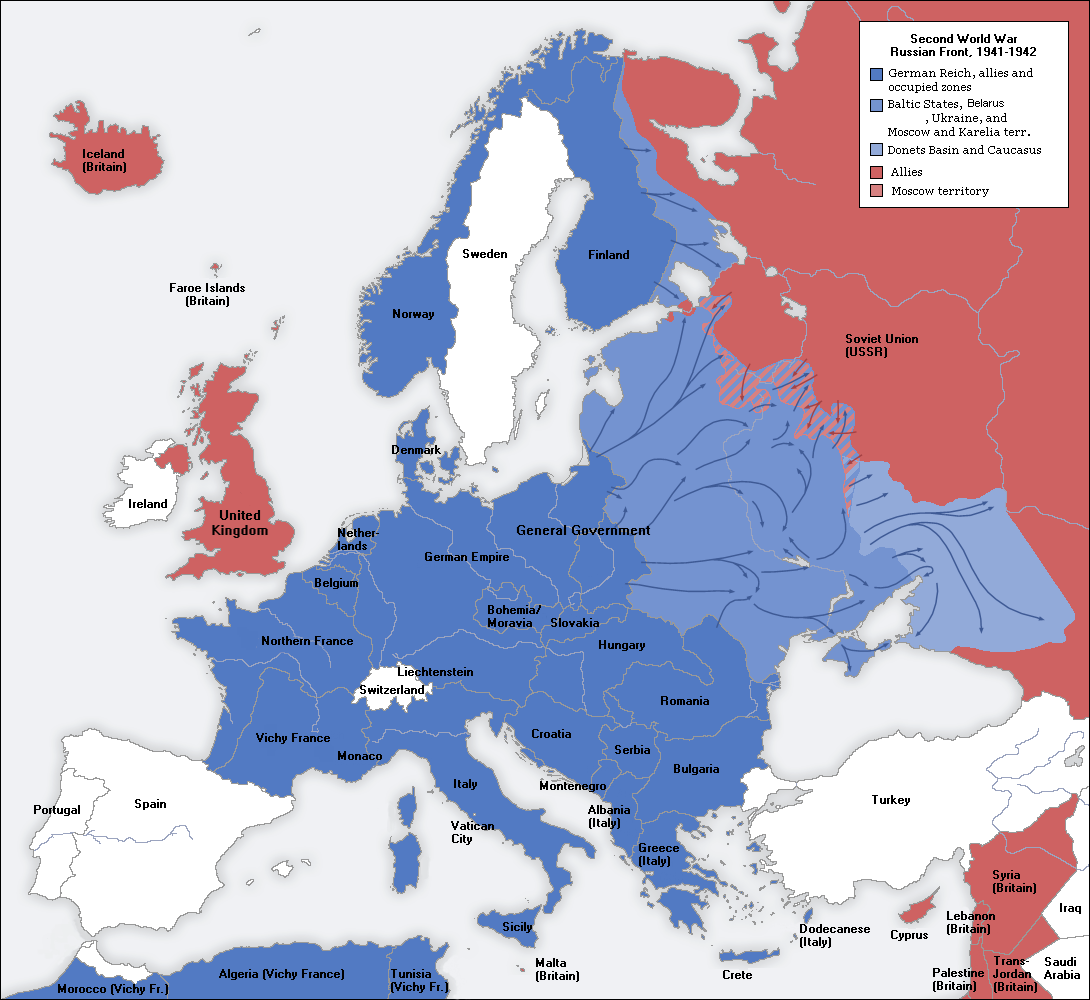- Introduction
- Theatres and Events of the Second World War in Europe
- Western Front
- France 1940
- Dunkirk
- Battle of Britain
- The US entry into the war in Europe
- Bomber Offensive
- Eastern Front
- Battle of Alamein
- Battle for Normandy
- Battle of the Bulge
- Battle of Atlantic
1. Introduction
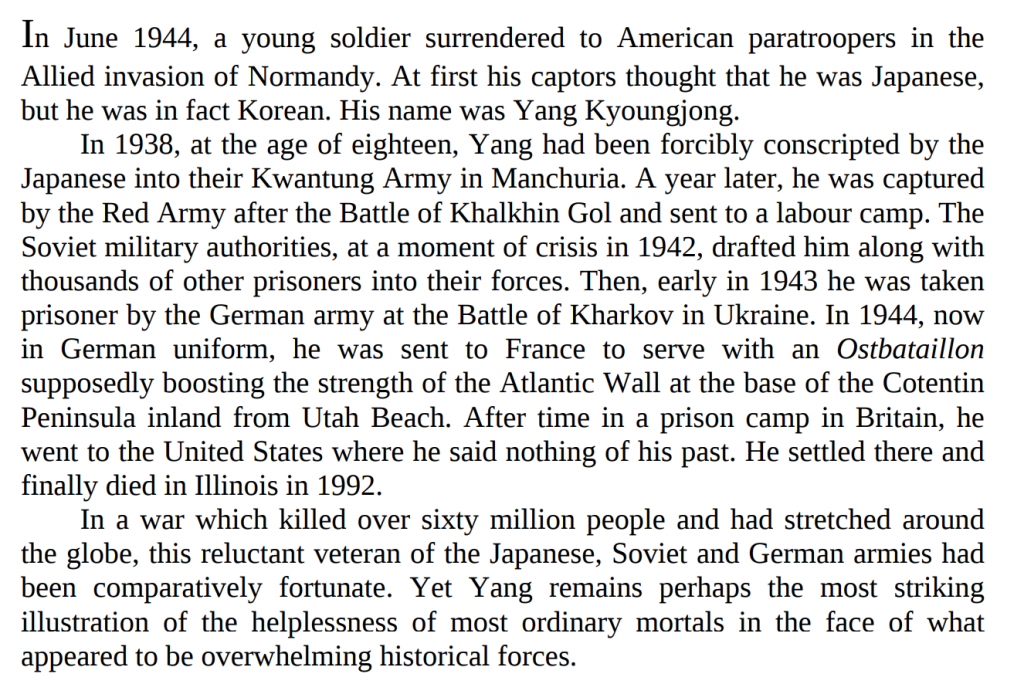
2. Theatres and Events of the Second World War
Western Front
From September 1939 to May 1940 there was little combat in western Europe. This period of time was labelled the ‘Phoney War’ as a result. However, the phrase is not entirely accurate because the war on the seas was very much alive at this time (see War on the Seas below).
France 1940
- The French Army was strong in 1933 when Hitler took power but did not make the progress it should have done. It focused on horse and rail transport rather than motorised transport and believed in the defensive impregnability of the Maginot Line. One of the reasons for this failure to progress was that it was on the victorious side during the First World War. There was little reason to change as a result.
- France was also internally divided. It did not have a government when Hitler became Chancellor or when he took Austria in 1938. The Left wanted to stop the rise of the Right in Europe, refusing to work with them in France. On the other hand, the growing Left in France perhaps made the industrialists and property-owning classes to prefer Hitler to their own people governing the country Sir Edward Spears, British liaison between the French and British military between the wars.
- The French had built the Maginot Line but their strategy was to fight in Belgian or German land. To prove to the Belgians they would support them in a future war, they did not extend the Line beyond Belgium (if they did, they were likely to defend behind it and seemingly allow Belgium to be left alone to fight). But in 1936, Belgium decided to be neutral in any future conflict, destroying their strategy. Consequently, France began extending the Line to the sea although it was not ready by 1940.
- They also remained on the defence; the Maginot Line ironically protected Germany more than France as a result. Furthermore, France had the opportunity to attack Germany in September 1940 (during the conflict against Poland) but, apart from a short Saar Offensive, chose not to do so. They did not want to antagonise the Germans! Even when defending France, they mistakenly assumed the one-hundred mile front of the Ardennes (see map) was inaccessible to tanks and armoured cars. Consequently, some of their weakest troops guarded this section, a fact that the Wehrmacht was aware of.
- The British and French were pioneers in tank warfare in the First World War. But they were somewhat ignored after the war, the tanks between 1916-18 being cumbersome and unreliable weapons. Famously, the Germans did not agree with theorists such as Colonel Heinz Guderian explaining in 1936 that concentrated tank forces with air support were the future of warfare.
- The Phoney War also weakened morale, there was no conflict between September 1939 to April 1940 so discipline suffered. The worst winter in fifty years added to this deteriorating morale and work on the Maginot Line was reduced too.
- The French commander, General Gamelin, chose to seek military objectives other than in France. Furthermore, he sought to attack Germany when the Allies had a numerical advantage in weapons and personnel (this would have been in 1941). Both Britain and France had rearmed in the mid-1930s and had the technology to rival the Germans. But they chose to use it differently.
History Crunch – Battle for Francehttps://totallyhistory.com/the-battle-of-france/embed/#?secret=EQMzO4sr1N
Dunkirk
Dunkirk was not the miracle history thinks it was
Not Everyone Escaped at Dunkirk. This Is What Happened After the Rescue
Battle of Britain
- Victory for Britain allowed it to become a base of operations for a future landing of continental Europe. This occurred in 1944 with the Normandy Landings. (see below)
The US entry into the war in Europe
Bomber Offensive

British Bombing Strategy in World War Two
COMBINED BOMBER OFFENSIVE (CBO)
THE BOMBING OFFENSIVEhttps://www.historylearningsite.co.uk/world-war-two/the-bombing-campaign-of-world-war-two/the-thousand-bomber-raid/embed/#?secret=nroKmBNyyR
The Eastern Front
The following tables explain the importance of the eastern front. Click on the link to find out more statistics from the Second World War.
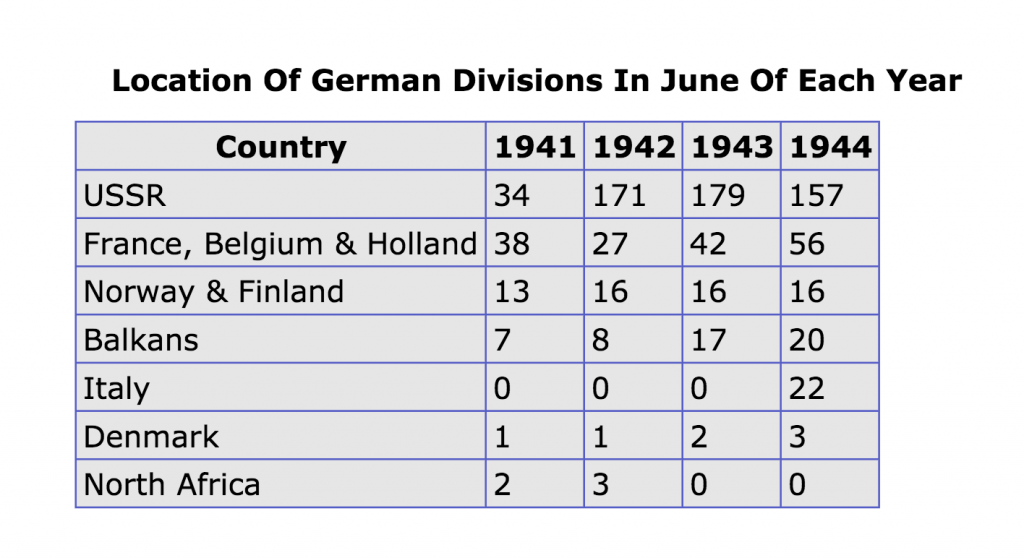

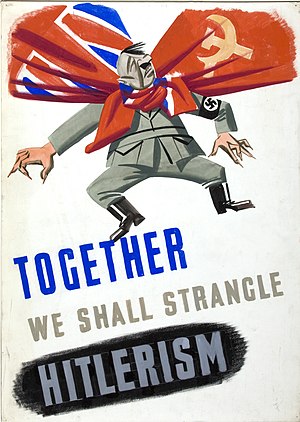
The Allies supported the Soviet Union with supplies during their war against Nazi Germany. The following two articles explain the effectiveness of this ‘Lend-Lease’ programme.
Russia’s Life-Saver: Lend-Lease Aid to the U.S.S.R. in World War II (Book Review)https://www.historynet.com/russias-life-saver-lend-lease-aid-to-the-ussr-in-world-war-ii-book-review.htm/embed#?secret=OmO5fV4YTN
Battle of El Alamein
Battle for Normandy
The three key Allied leaders met Tehran Conference to discuss the opening of a second front against the Axis forces. Stalin had asked for this since 1941 but the Allies had insisted their forces were not yet ready.
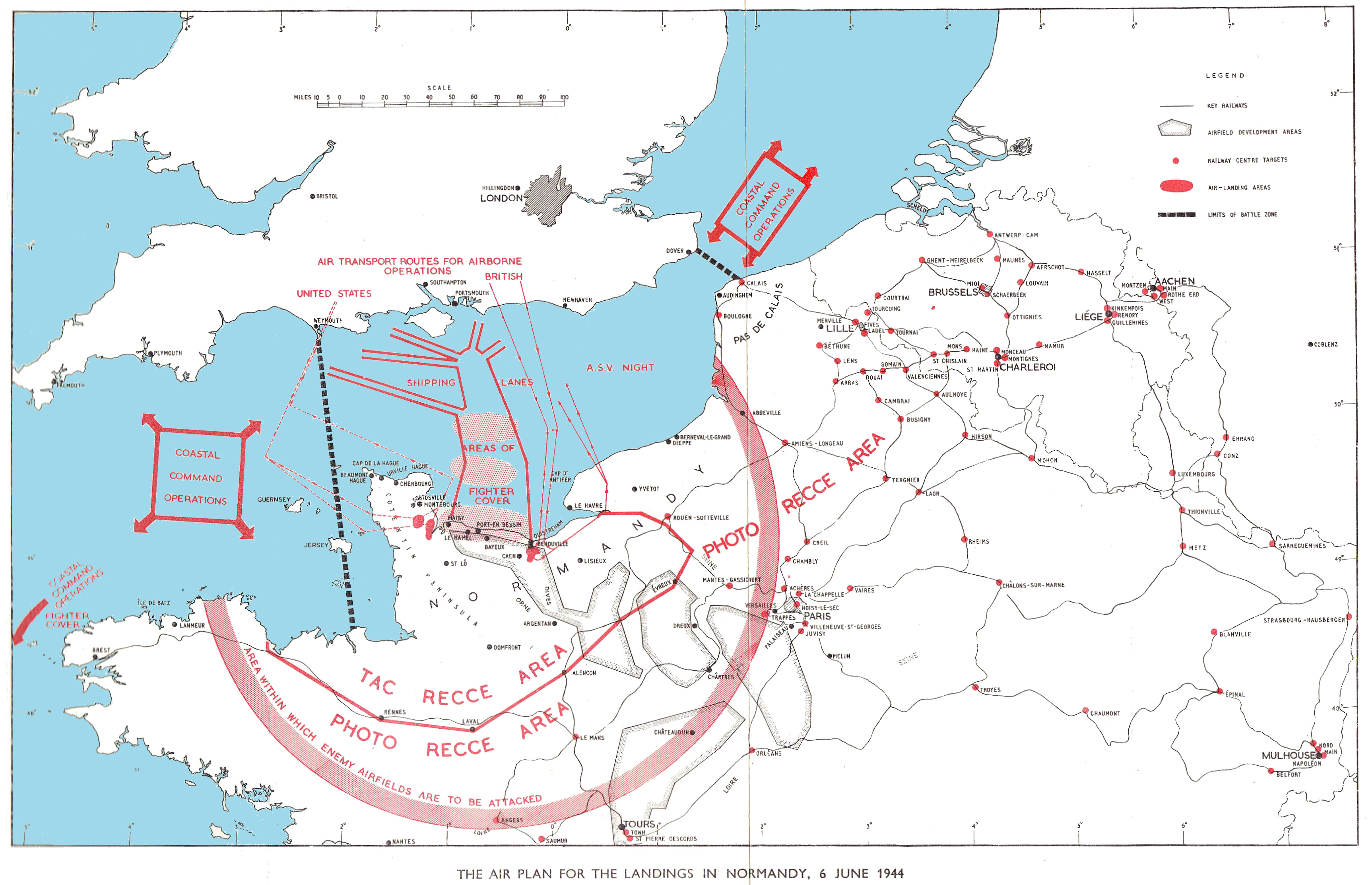
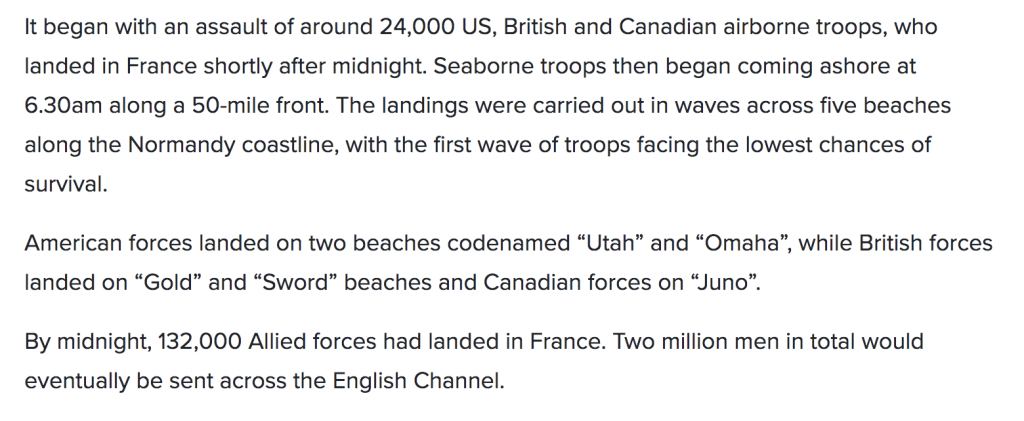

Lend-Lease Helped Win World War II, But Not On The Eastern Fronthttps://www.historyhit.com/facts-about-the-battle-of-normandy/embed/#?secret=cauwfv5hyh
How do the numbers involved in the invasion of Normandy compare to the eastern from at the time?


Battle of the Bulge


Battle of the Atlantic

